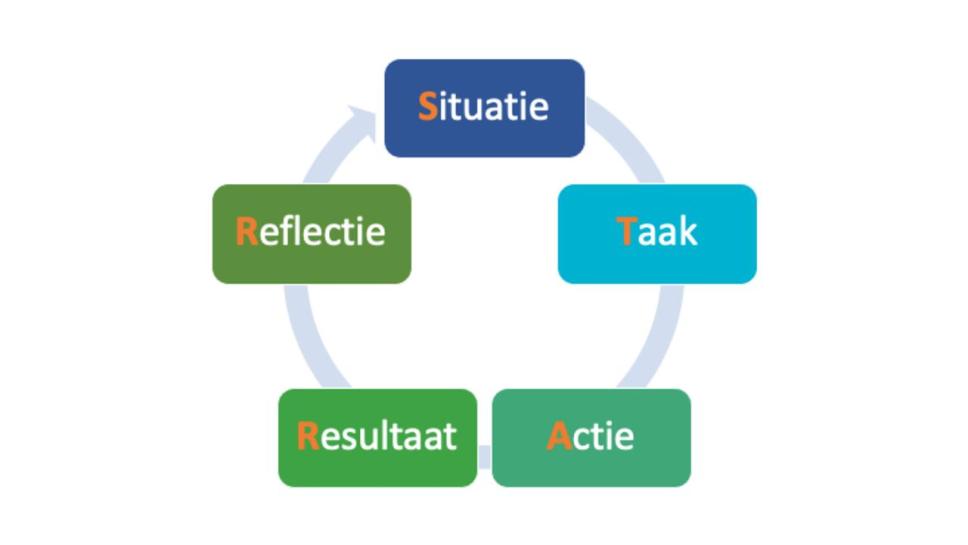It happens frequently: a candidate seemed so promising on paper, but in practice it did not come out. A good screening is therefore very important.
As an assessor, recruiter or HR manager it is therefore essential to have the right selection techniques. Roughly speaking, this means making correct observations, learning to ask the right questions and learning to listen.
The goal: attracting the right people with the right competencies. Spotting talent at the earliest possible stage is a revolutionary recipe for success. Curious how to go about it? In this blog article you will learn exactly what to do.
RECRUITING: 4 TIPS FOR SPOTTING TALENT
In order to see which candidate is best suited for a particular job, it is necessary to look at talent in a completely different way than was previously done. In the twentieth century, we looked for the smartest candidates with the highest grades.

But that is no longer relevant. The world is changing rapidly and new technologies are being developed every day, changing the market for many industries. Knowledge is no longer the most important thing, competencies and attitudes are.
#1 DEFINE WHO THE 'IDEAL CANDIDATE' REALLY IS
To know which attitudes and competencies are important for success in the job, you need to prepare the job interview thoroughly.
For instance, it is important to define the content of the interview beforehand. The interviewer will then be less guided by his intuition during the conversation.

On the other hand, it is important first of all to have identified the ideal candidate. Our tip? Determine in advance the relevant competencies you want to test in the candidate. Based on that, you draw up a set of questions. In this way you work in a criterion-oriented way.
For example: someone applying for the job title of executive secretary must show a sense of responsibility and be stress-resistant. It makes little sense to measure other behavioural competencies that are not relevant to the job.
A useful starting point in this round of information is the question of what distinguishes a good employee from a medium one. In other words: what situations does the employee encounter? What specific tasks does he/she face? And what is the desired behaviour in that case?
#2 USE THE RIGHT INTERVIEW TECHNIQUES
After you have defined what the ideal candidate looks like for you and which behavioural competencies are important, you must finally determine which interview technique is most suitable for examining these characteristics in the candidate.

An efficient technique is, for example, the STAR(R) method. The abbreviation STAR(R) stands for situation, task, action, result and possibly reflection.
First of all, the interviewer thinks about the criterion or competence he wants to measure. Then you ask a specific question that is related to this.
For example: give an example of a situation in which you made a proposal to do things differently.
You ask the candidate to describe the situation. You then ask the candidate to describe his specific task in this situation, what action he took and what the reason for this approach was. Then you ask about the result. Did the chosen approach have the desired effect?
Finally, the fifth step should leave room for the candidate to reflect. Is he satisfied with the result achieved? Would he do things differently next time? If so, how?
Below is an overview of the help questions:
- Situation: how did it go? What was it exactly about?
- Task: who else was involved? What was your specific role?
- Action: how did you handle this exactly? What did you do to improve the situation?
- Rresult: how did it end? What was the result?
- Reflection: were you satisfied with the result? Would you do it again next time?
#3 USE THE RIGHT EVALUATION TECHNIQUES
It is not only important to use the right interview technique. The right evaluation technique can also separate the wheat from the chaff and provide you with the perfect candidate. An assessment center is a valuable technique to do this in an objective way.
The purpose of such an assessment is to measure behavioural competencies. This can be an assignment or simulation, or it can be a questionnaire or test. The assessment technique you use depends on the position candidates are applying for.
For a commercial function, it is advisable to have the candidates conduct a sales discussion. For a managerial function, the focus is more on an in-tray simulation.
So you see that the choice of evaluation technique is not random. An analysis and presentation assignment, for example, is of little use when you're looking for a technical profile, whereas it is important for a managerial position.
#4 MAINTAIN YOUR RELATIONSHIP WITH POTENTIAL TALENT
A modern recruitment process must be agile and flexible enough to adapt to non-linear events. For example, you may select a candidate who will not be ready to consider new opportunities for another year.

Or it may be that you reject a candidate, but a few months later find a new position for which he or she is better suited. It is then important to keep an eye on such candidates and sustain your relationship with them.
Top talent doesn't knock on doors, so recruiters today need to be smart and strategic and use and nurture the relationships they already have. So don't leave the influx of highly qualified employees to mere chance.
Those who are not useful or suitable now may be so later. The relationship between employer and candidate-employee must, however, be maintained during this time.
Here are a few concrete tips:
- Keep in touch via social media. Social channels - such as LinkedIn - are the perfect way to keep in regular contact with potential candidates. Moreover, you are informed about their career steps at a glance. Don't you have LinkedIn? Then you can also keep a database in which you collect as much information as possible from potential employees. Of course according to the appropriate GDPR regulations. In that case, also keep a close eye on why you are archiving a candidate (compensation, timing, seniority, etc.)
- Set up a Google Alert that warns you of important events. Think of birthdays for example. Or you can invite a potential candidate to an event or workshop.
- Set reminders to contact candidates at a later date when their circumstances may have changed. For example: working students or interns who, after graduating and a few years of work experience, might be ready to move on.
CONCLUSION
Do you want to fine-tune your recruitment and selection policy, but don't know exactly how? Then our training on behavioural interviewing might be something for you.
This interactive learning programme prepares you in two days to conduct effective selection interviews. An investment that will pay off for years to come. You can register via this link.
Do you want to learn how to spot talent and how to objectively translate people's behaviour into the right competencies? Then you can register for our assessor training;
If you have any questions or remarks, feel free to contact us. We will be happy to help you.
Oh yes, and would you like to be engaged in this kind of business on a daily basis? Then just come work with us. Talent spotting is our passion! Please have a look at our vacancies.